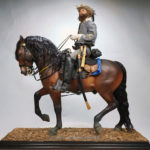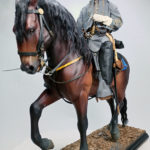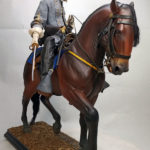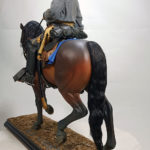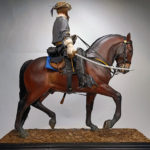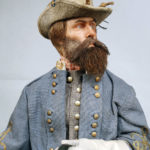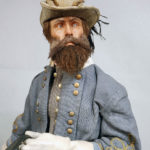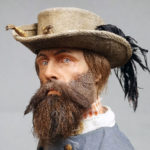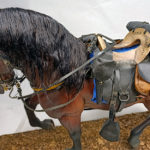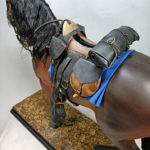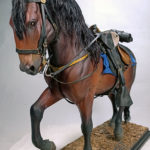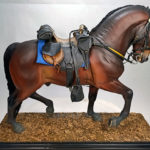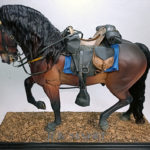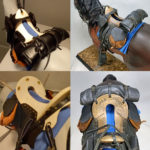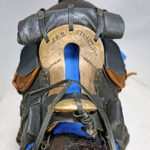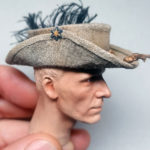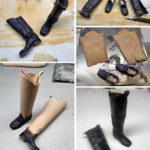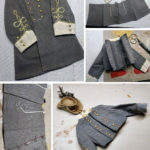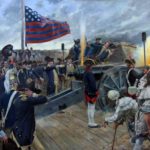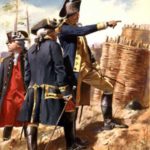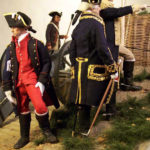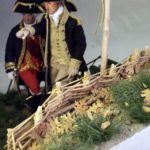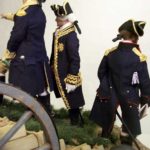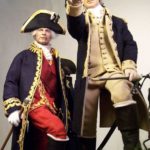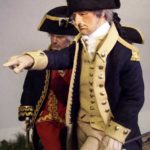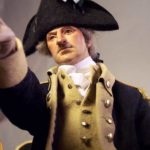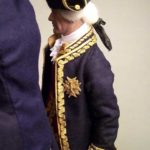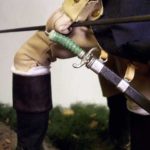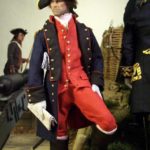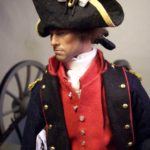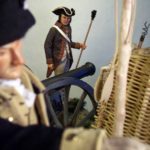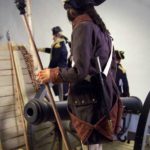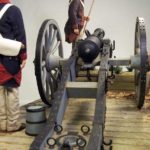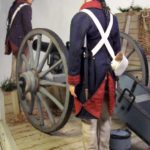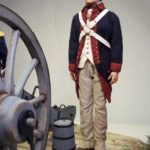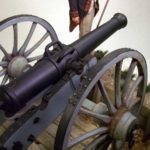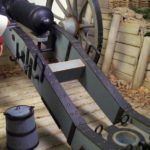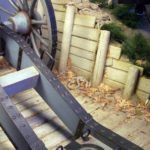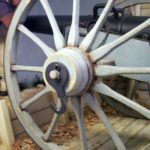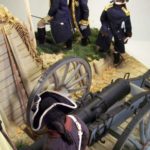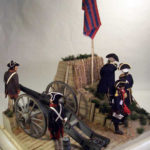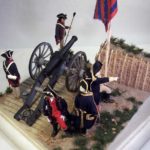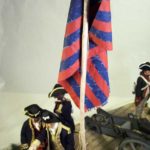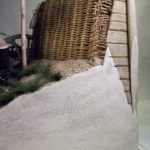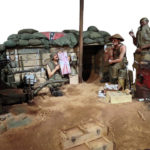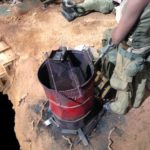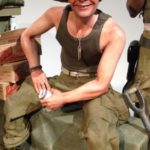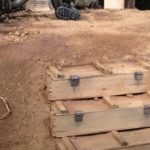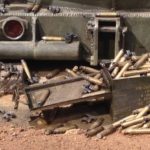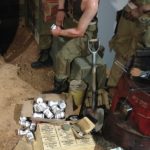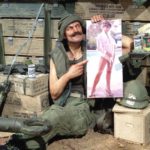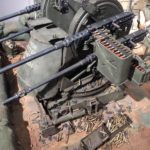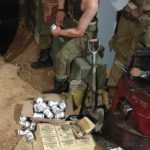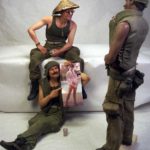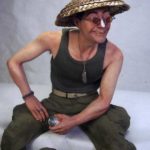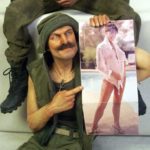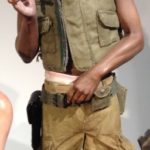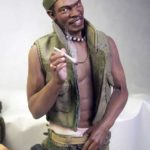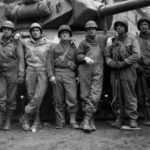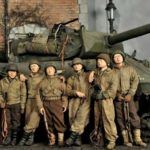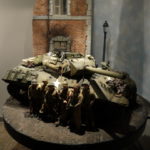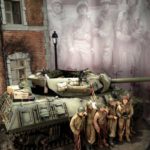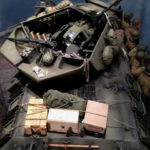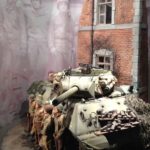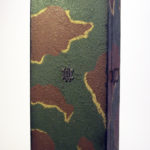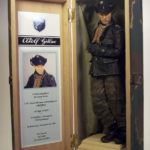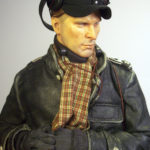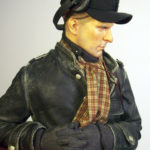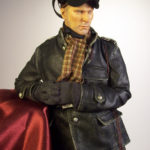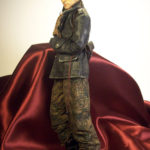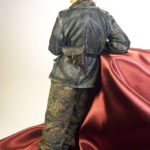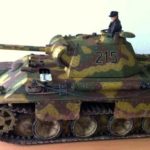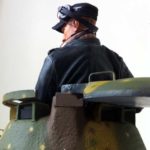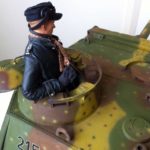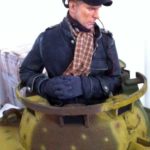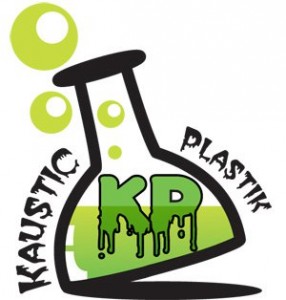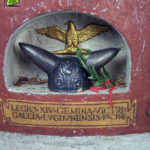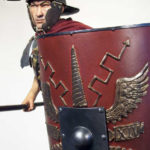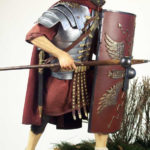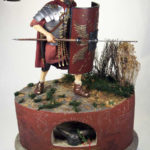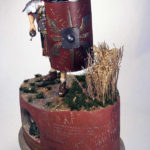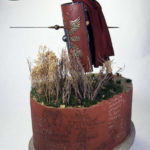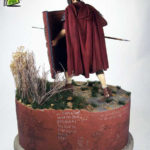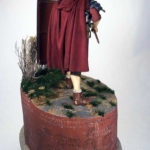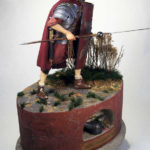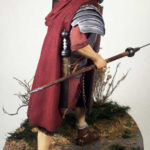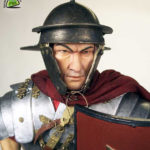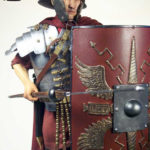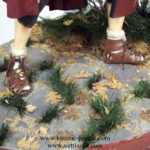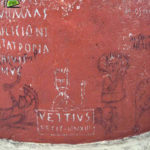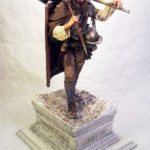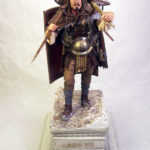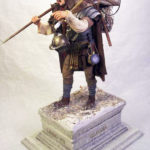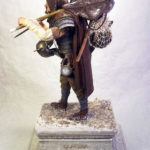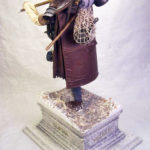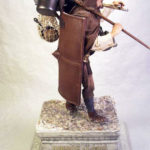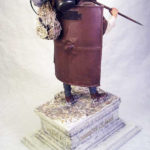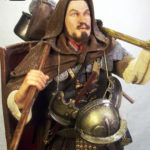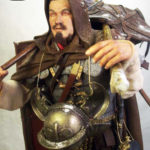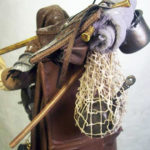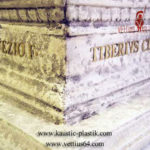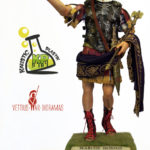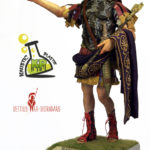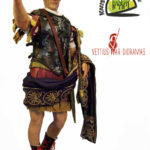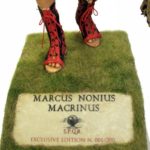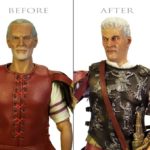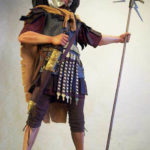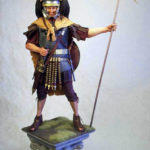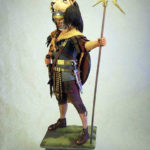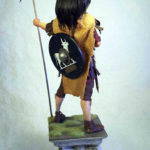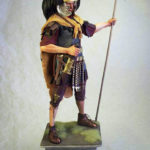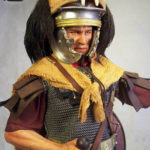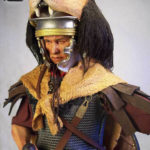CSA General James Ewell Brown “JEB” Stuart, Commander of the Cavalry Corps of Robert E. Lee’s Army of Northern Virginia.
Horse “Equus Audentia” by Luis Aguilar (Nohuanda Equine Art on FB)
Saddle&harness by Cesar Dubon (OneSix Scale Saddles on FB): a perfect reproduction of the original one, kept at the Confederate Museum in Richmond, Virginia
Figure and weathering by me
I’ve had the privilege of collaborating with Luis and Cesar on some projects in the recent past. Once again their contribution was fundamental!
Walking Tour of The Suncoast Center for Fine Scale Modeling (FLA)
In addition to the modeling wonders on display, this video contains most of the works I’ve created for the Center over the past few years. I wish you good viewing!
“Siege of Yorktown”, October 1781. Tony Barton and me.
The Siege of Yorktown, Battle of Yorktown, or Surrender at Yorktown, the latter taking place on October 19, 1781, was a decisive victory by a combined force of American Continental Army troops led by General George Washington and French Army troops led by the Comte de Rochambeau over a British Army commanded by British lord and Lieutenant General Lord Cornwallis. The culmination of the Yorktown campaign, the siege proved to be the last major land battle of the American Revolutionary War in North America, as the surrender by Cornwallis and the capture of both him and his army, prompted the British government to negotiate an end to the conflict. (Font Wikipedia)
I’ve had the chance and privilege to cooperate with Magister Tony Barton, who has realized in a sublime way, the real Stars of the scene, ie the General Washington (including its portentous portrait), the Earl de Rochambeau and the young French officer.
Thanks again Tony, you’ve been really priceless!
On display at the Suncoast Center For Fine Scale Modeling (FLA)
“Push Button Birth Control” – Dave Dibb, Dave Revelia and me
This time too, the bulk of the work was done by other guys, and more precisely by Dave Dibb (Armopax) who built the first version of the diorama (almost all components within the scene, were done by him), then skillfully reworked by Dave Revelia (Suncoast Center). As always, my work has focused just on the figures.
Battle at Stavelot (D.Revelia, J.Grima, Vettius)
This project that’s now on display at the Suncoast Center for Fine Scale Modeling, was inspired by a photo shot during the fighting near Stavelot (Belgium), during the Battle of the Bulge.
The crew it’s created by me, the M10 Tank Destroyer was built by John Grima (www.eastcoastarmory.com), the details, building section, weathering and diorama was built by Dave Revelia (www.finescalemodeling.org)
Panther Commander – 1st SS Panz.Div. Leibstandarte, 2nd company Pz. Reg. 1 – Stoumont, Dec. 19th ’44
The 1st SS-Panzer Division Leibstandarte SS Adolf Hitler (abbreviated as 1. SS-Pz.Div. LSSAH) began as Adolf Hitler‘s personal bodyguard, responsible for guarding the Führer’s person, offices, and residences. Initially the size of a regiment, the LSSAH eventually grew into an elite division-sized unit. The term Leibstandarte was derived partly from Leibgarde – a somewhat archaic German translation of “Guard of Corps” or personal bodyguard of a military leader (“Leib” = lit. “body, torso”) – and Standarte: the Schutzstaffel (SS) or Sturmabteilung (SA) term for a regiment-sized unit.
The LSSAH independently participated in combat during the invasion of Poland, and was amalgamated into the Waffen-SS together with the SS-Verfügungstruppe (SS-VT) and the combat units of the SS-Totenkopfverbände (SS-TV) prior to Operation Barbarossa in 1941. By the end of World War II it had been increased in size from a regiment to a Panzer division.
The Leibstandarte division’s symbol was a skeleton key, in honour of its first commander, Josef “Sepp” Dietrich (Dietrich is German for skeleton key or lock pick); it was retained and modified to later serve as the symbol for I SS Panzer Corps. The elite division, a component of the Waffen-SS, was found guilty of war crimes in the Nuremberg Trials. Members of the LSSAH participated in numerous atrocities. They killed at least an estimated 5,000 prisoners of war in the period 1940–1945, mostly on the Eastern Front (Font Wikipedia).
The Panther was built by Ton van Rijnberk, master builder of “Field of Armour Tanks”
“Valerius” Legio XIV Gemina Victrix
Valerius from Gallia Lugdunensis
Roman Legionary – Legio XIV Gemina – Roman Invasion of Britain Circa 49 A.D.
Stationed in Moguntiacum, Germania Superior, since AD 9, XIV Gemina Martia Victrix was one of four legions used by Aulus Plautius and Claudius in the Roman invasion of Britain in 43, and took part in the defeat of Boudicca in 60 or 61.
This was the battle that would send them down in history as one of the greatest Roman Legions.
At the stand at Watling Street the 14th defeated Boudicca’s force of 230,000, according to Tacitus and Dio, with their meager force of 10,000 Legionaries and Auxiliaries.
This act secured them as Nero’s “most effective”, and kept them garrisoned in Britain during the next few years to keep the uneasy tribes in check. After which, in 68 it was stationed in Gallia Narbonensis (font KP).
My first jointventure with Italian brand Kaustic Plastik, “Valerius” has required very few changes, given its high quality standards. Were limited to remodeling and painting of the body parts exposed.
Base: scratchbuilt.
MARCUS NONIUS MACRINUS Dux Exercituum Imperatoris Marci Aurelii – Circa 161 A.D.
“Museum Quality” piece made for Kaustic Plastik.
Lucius Duccius Rufinus – Aquilifer – Legio IX Hispana
“Museum Quality” piece made for Kaustic Plastik.
